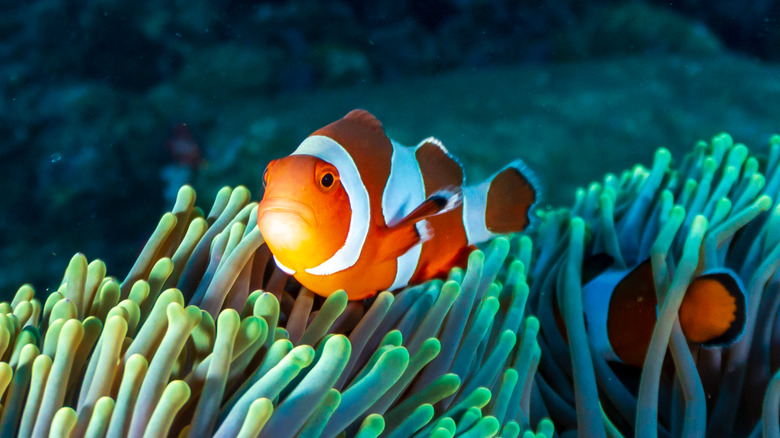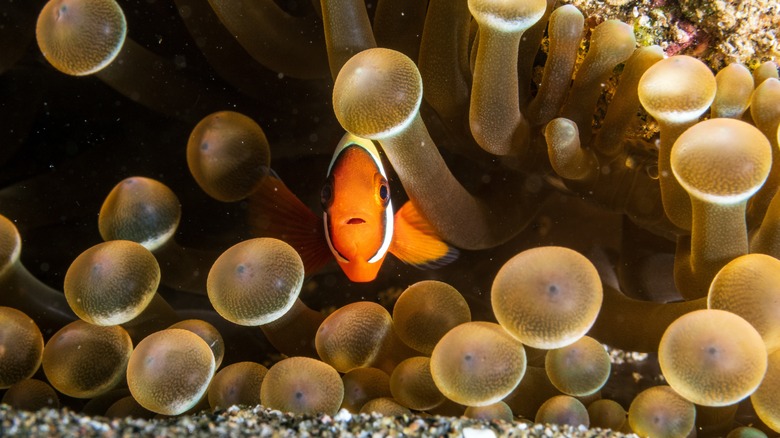How A Male Clownfish Can Become Female During Its Lifetime
The clownfish (anemonefish) is one of the most adaptive creatures on the planet. For instance, over the eons it evolved to live in the tentacles of sea anemones, which enjoy stationary lives on the bottom floor of coral reefs and oceans, stinging and paralyzing small fish as they pass through the plant-like tentacles (via Britannica). Clownfish are immune to the shocks, however, and therefore have their own personal fortresses — the sea anemones protect them from predators. Clownfish spend their entire lives in and around their sea anemones (via the University of Illinois).
The clownfish's true claim to fame, however, is its ability to change its sex. More specifically, males can metamorphose into females. Good thing, too, because all clownfish are born males, as National Geographic notes. This change is actually much more common in the animal kingdom than many suppose. The clownfish is one of 500 fish species that can change sex (via BBC Earth). There are also lizards, frogs, slugs, snakes, butterflies, and other creatures that do the same, according to World Atlas. But how does the clownfish swap sexes, and why?
Becoming Female
Interestingly, the little orange and white swimmer experiences a change in the brain long before a change in its reproductive organs. According to researchers at the University of Illinois, if a female clownfish dies, her mate takes over her duties of guarding their nest and eggs within an anemone. Over the course of six months, the male's brain chemistry changes. Its preoptic area grows to the size of a female's, it exhibits other behaviors only seen from that sex, and other fish interact with it as they would other females. The creature's brain and mannerisms become indistinguishable from a female's.
Then the gonads begin to change, though not always. Some clownfish continue on for years with a female brain and male reproductive systems. Others develop female gonads, and begin producing and laying eggs. The female takes a male mate, restoring the gender balance and helping the species survive.
In 2016, scientists narrowed in on the specific genes that control this process.
Genes and Environment
According to a study published in Scientific Reports, the clownfish's "aromatase gene" is the key player in both changes to the brain and to the gonads. Genes are units in DNA that control certain proteins that affect the physical nature of the body (via Britannica). In other words, genes determine what a life form looks like and how it works, including all its internal and external characteristics.
If a male clownfish becoming female seems outlandish, it may help to think about how genes, like one called "MKRN3," activate puberty in human beings (via the National Institute of Health). The development of human sexual traits such as breasts or the lowering of the testes is determined by gene activation. This can be affected by environmental factors (via the Journal of Pediatric Endocrinology and Metabolism). There is an entire field, epigenetics, devoted to studying how external forces influence genes. Food, drugs, and toxins can switch our genes "off" when they should be "on," and vice versa (via Duke Magazine).
While humans haven't evolved to experience anything as dramatic as environmental factors triggering genes to orchestrate a sex change, looking at our own biology makes it a little easier to see how the clownfish did. If external circumstances can influence our sexual development and turn genes on or off, why couldn't the same happen to a fish?


